Karterados
the peaceful scenery soothes the eye from the wilderness of the black volcanic rocks
the peaceful scenery soothes the eye from the wilderness of the black volcanic rocks
The settlement is 2 km south of Fira. The area is considered to have been inhabited since the 17th century, and the original buildings were rock-hewn underground. Lying in a dried-up riverbed, the village was practically invisible.
Its name comes from the Greek word karteri (ambush point), possibly because locals ambushed pirates here. In the 19th century, it was one of the largest captains’ villages on the island, and they travelled with their frigates to Russia, Malta, and Egypt.
The village is divided in two parts: main part and Vounitso. You will be impressed by the old settlement with the carved-in houses on the left and the right part of the streambed.
The influence of Italian ecclesiastical architecture is evident at the church of Analipsi tou Sotira (Ascension of the Savior) with the tower-shaped belfries, which stands at the centre of the village. It is celebrated with large festivities forty days after Easter.
There are two more churches built in the typical Santorini architectural style: Aghios Nikolaos (Saint Nicholas) and Isodia tis Theotokou (Presentation of the Virgin Mary).

At Karterados, the peaceful scenery soothes the eye from the wilderness of the black volcanic rocks, since it overlooks a valley of vineyards at the east side of the island.
The settlement is 2 km south of Fira. The area is considered to have been inhabited since the 17th century, and the original buildings were rock-hewn underground. Lying in a dried-up riverbed, the village was practically invisible.
Its name comes from the Greek word karteri (ambush point), possibly because locals ambushed pirates here. In the 19th century, it was one of the largest captains’ villages on the island, and they travelled with their frigates to Russia, Malta, and Egypt.

